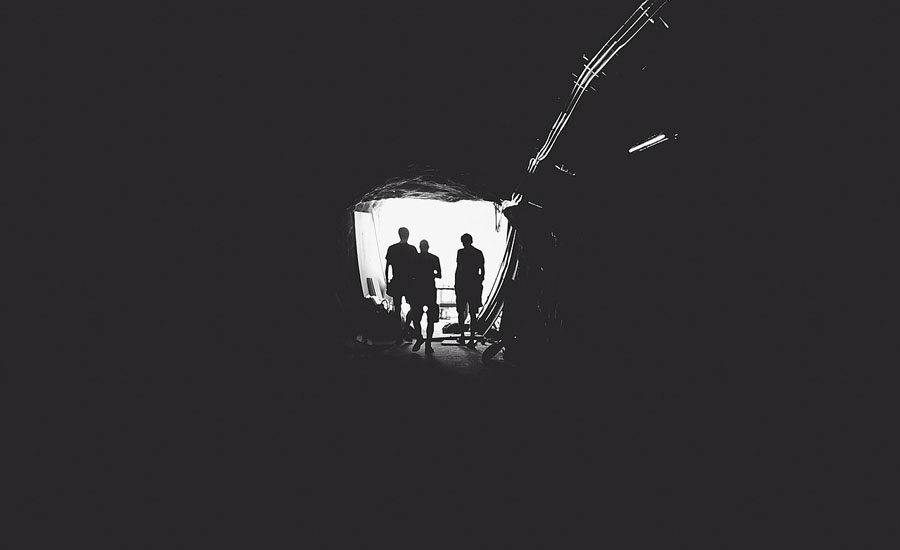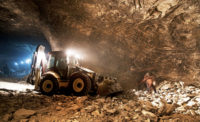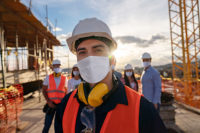Cities and towns beset by natural disasters or catastrophic events immediately turn to their community’s first responders to coordinate and execute rescue and recovery efforts.
The practice is no different when a calamity occurs in an underground mine. Experienced teams of mine rescuers immediately converge on the site of a mine explosion, fire, roof collapse or inundation of water to locate and rescue their fellow miners who may be trapped, injured or missing underground.
The conditions that await these teams – sometimes hundreds of feet below the earth’s surface – present challenges and hazards that can spell the difference between life and death. While time is of the essence, rescues such as these take methodical planning and precision.
You may recall the successful rescue of nine miners who were trapped in a flooded Pennsylvania coal mine 14 years ago last month. Over the course of 77 hours, dozens of rescue personnel carefully planned, plotted and executed a rescue operation that was not without its setbacks – millions of gallons of water threatened to drown the trapped miners, and drill bits boring through the earth’s crust repeatedly broke and had to be replaced, further delaying the rescue. Ultimately, however, nine cold and hungry miners were safely brought to the surface, and Quecreek stands as one of the most successful mine rescues in U.S. history.
How do mine rescue teams prepare for a mine disaster? They undergo extensive training, often in a simulated mine environment. One of the most useful venues for developing and honing their skills is a mine rescue competition, which pits teams against each other in a time-restricted, intricately designed disaster scenario.
In late July, 35 mine rescue teams representing mining operations from 16 states gathered in Reno, Nevada, for the National Metal and Nonmetal Mine Rescue Contest. The contest was co-sponsored by the Mine Safety and Health Administration and the Nevada Mining Association. Among the participants were teams that traveled from salt mines in Texas and Louisiana, silver mines in Idaho, lead mines in Missouri and soda ash mines in Wyoming. A team from the Waste Isolation Pilot Project, the nation’s only repository for the disposal of nuclear waste, took home top honors. Located outside of Carlsbad, New Mexico, the team is represented by the United Steelworkers.
While we expect mine rescue teams to willingly respond to some of our nation’s most difficult emergency situations, we owe them the best training, equipment and support to help them be successful and to stay safe during a rescue operation.
Since 2010, MSHA has devoted considerable attention to developing new mine emergency response systems with the latest communications and tracking systems, along with mapping and atmospheric monitoring equipment, to improve and streamline communications between the surface command centers and the rescue teams underground. These systems are located at four mine emergency operations sites in Kentucky, Pennsylvania, Utah and West Virginia, and they can be deployed almost immediately in the event of a mine disaster.
New and better mine rescue technology is continually evolving, such as seismic detection and robotics to remotely locate missing miners, and the use of video communications with helmet-mounted cameras for advancing mine rescue teams. Improved refuge alternatives and adding voice-communication capabilities to self-contained breathing apparatuses will enable miners to converse with each other without inhaling poisonous air during a mine emergency.
Together with state agencies, mining companies, mine operators and trainers across the country, we are testing our readiness and better preparing mine rescue personnel throughout the nation.
Certainly we have achieved new levels of safety and health that rival any we have seen in the past. Last year was marked by historically low numbers of mining deaths, injury and fatality rates, respirable coal mine dust levels and chronic violators. These are the new benchmarks in mine safety and health. We must build upon this road map that has delivered these successes so miners can go to work and return home safely each and every day.
Visit the U.S. Dept. of Labor Blog at: www.blog.dol.gov



